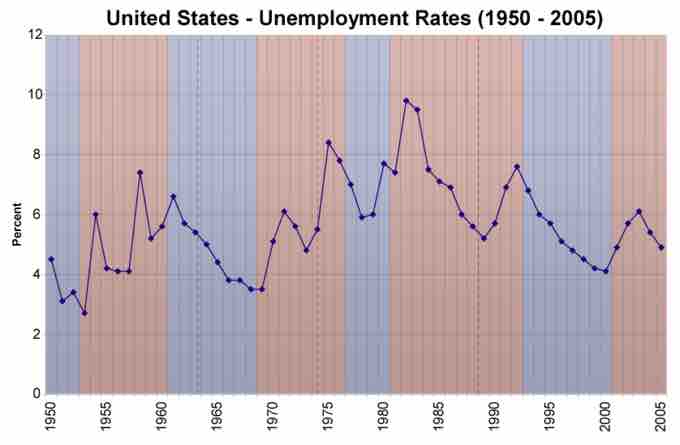Unemployment, also referred to as joblessness, occurs when people are without work and are actively seeking employment. During periods of recession, an economy usually experiences high unemployment rates. There are many proposed causes, consequences, and solutions for unemployment.
Types of Unemployment
- Classical: occurs when real wages for jobs are set above the market-clearing level. It causes the number of job seekers to be higher than the number of vacancies.
- Cyclical: occurs when there is not enough aggregate demand in the economy to provide jobs for everyone who wants to work. Demand for goods and services decreases, less production is needed, and fewer workers are needed.
- Structural: occurs when the labor market is not able to provide jobs for everyone who wants to work. There is a mismatch between the skills of the unemployed workers and the skills needed for available jobs. It differs from frictional unemployment because it lasts longer.
- Frictional: the time period in between jobs when a worker is searching for work or transitioning from one job to another.
- Hidden: the unemployment of potential workers that is not taken into account in official unemployment statistics because of how the data is collected. For example, workers are only considered unemployed if they are looking for work so those without jobs who have stopped looking are no longer considered unemployed.
- Long-term: usually defined as unemployment lasting longer than one year.
Measuring Unemployment
Unemployment is calculated as a percentage by dividing the number of unemployed individuals by the number of all individuals currently employed in the workforce. The final measurement is called the rate of unemployment .

Unemployment Rate
Unemployment is calculated as a percentage by dividing the number of unemployed individuals by the number of individual employed in the labor force.
Effects of Unemployment
When unemployment rates are high and steady, there are negative impacts on the long-run economic growth. Unemployment wastes resources, generates redistributive pressures and distortions, increases poverty, limits labor mobility, and promotes social unrest and conflict. The effects of unemployment can be broken down into three types:
- Individual: people who are unemployed cannot earn money to meet their financial obligations. Unemployment can lead to homelessness, illness, and mental stress. It can also cause underemployment where workers take on jobs that are below their skill level.
- Social: an economy that has high unemployment is not using all of its resources efficiently, specifically labor. When individuals accept employment below their skill level the economies efficiency is reduced further. Workers lose skills which causes a loss of human capital.
- Socio-political: high unemployment rates can cause civil unrest in a country.
Reducing Unemployment
There are numerous solutions that can help reduce the amount of unemployment:
- Demand side solutions: many countries aid unemployed workers through social welfare programs. Individuals receive unemployment benefits including insurance, compensation, welfare, and subsidies to aid in retraining. An example of a demand side solution is government funded employment of the able-bodied poor.
- Supply side solutions: the labor market is not 100% efficient. Supply side solutions remove the minimum wage and reduce the power of unions. The policies are designed to make the market more flexible in an attempt to increase long-run economic growth. Examples of supply side solutions include cutting taxes on businesses, reducing regulation, and increasing education.